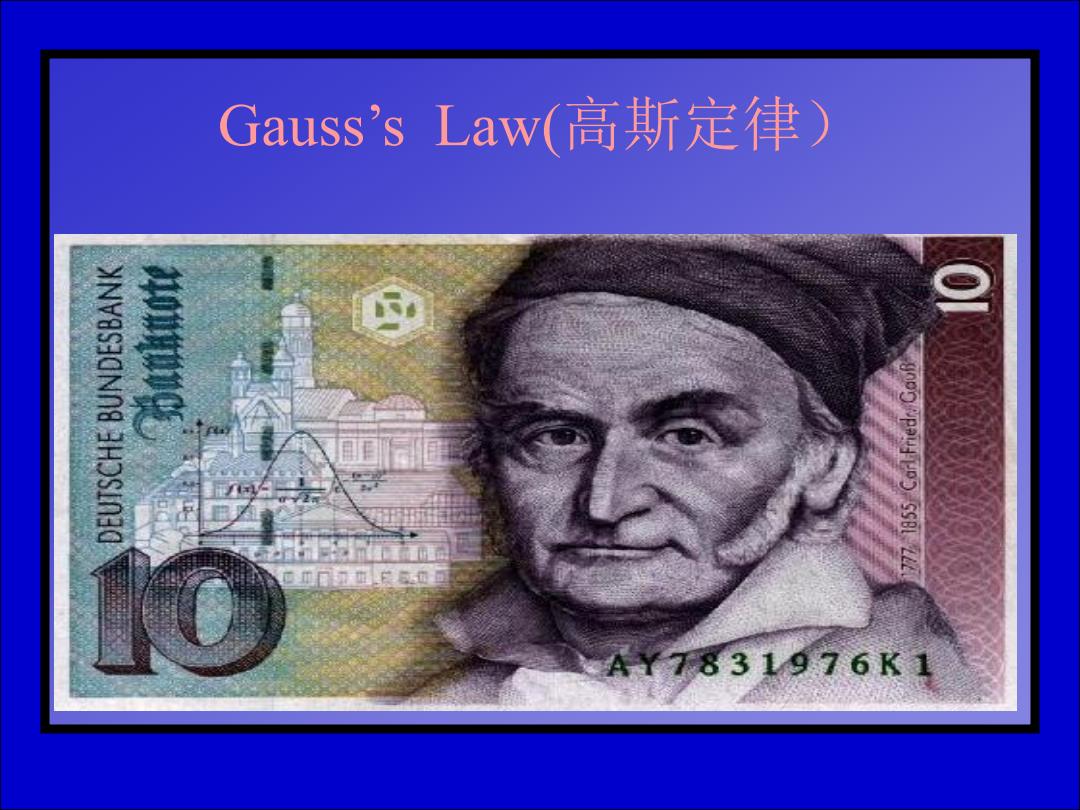
Gauss'sLaw(高斯定律) XNV8SJGNN8 3HDSIn3 AY7831976K1
Gauss’s Law(高斯定律)
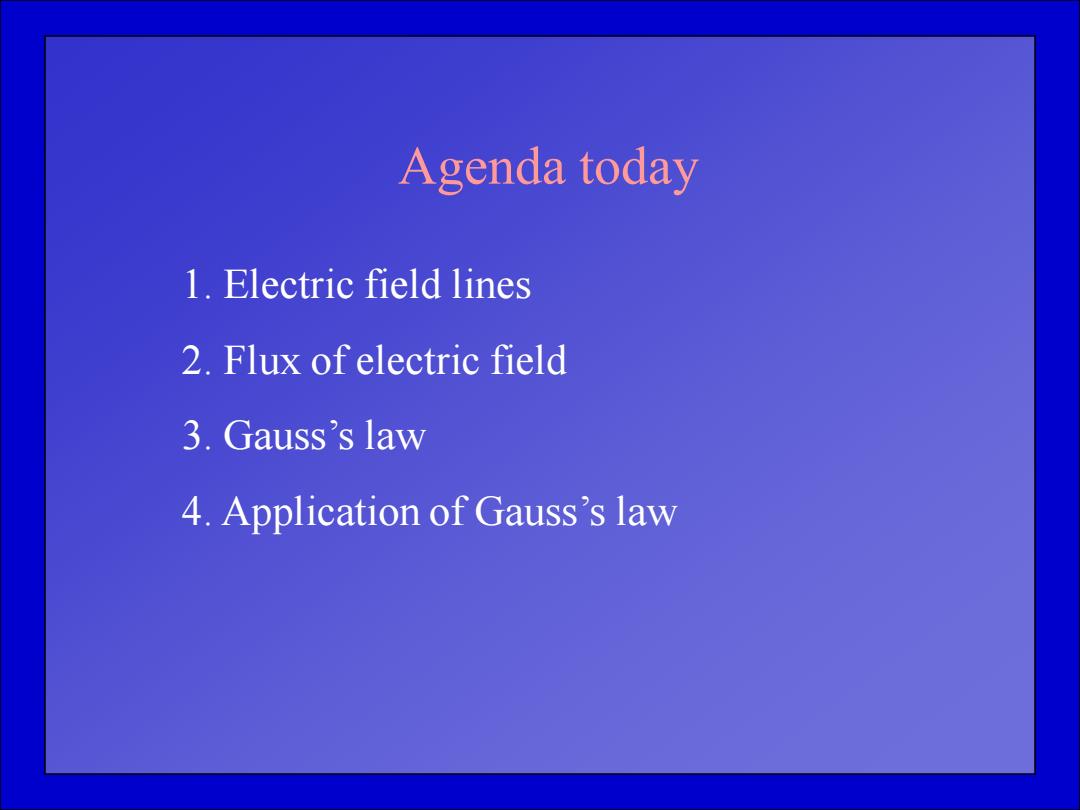
Agenda today 1.Electric field lines 2.Flux of electric field 3.Gauss's law 4.Application of Gauss's law
Agenda today 1. Electric field lines 2. Flux of electric field 3. Gauss’s law 4. Application of Gauss’s law
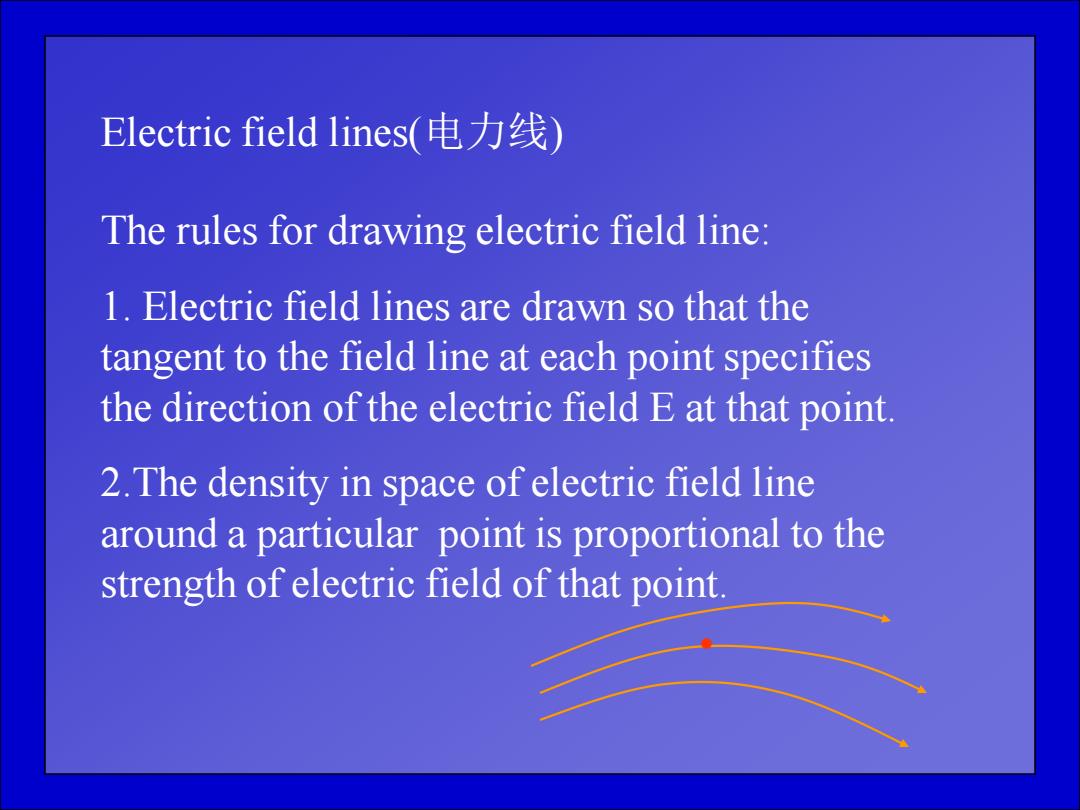
Electric field lines(电力线) The rules for drawing electric field line: 1.Electric field lines are drawn so that the tangent to the field line at each point specifies the direction of the electric field E at that point. 2.The density in space of electric field line around a particular point is proportional to the strength of electric field of that point
Electric field lines(电力线) The rules for drawing electric field line: 1. Electric field lines are drawn so that the tangent to the field line at each point specifies the direction of the electric field E at that point. 2.The density in space of electric field line around a particular point is proportional to the strength of electric field of that point
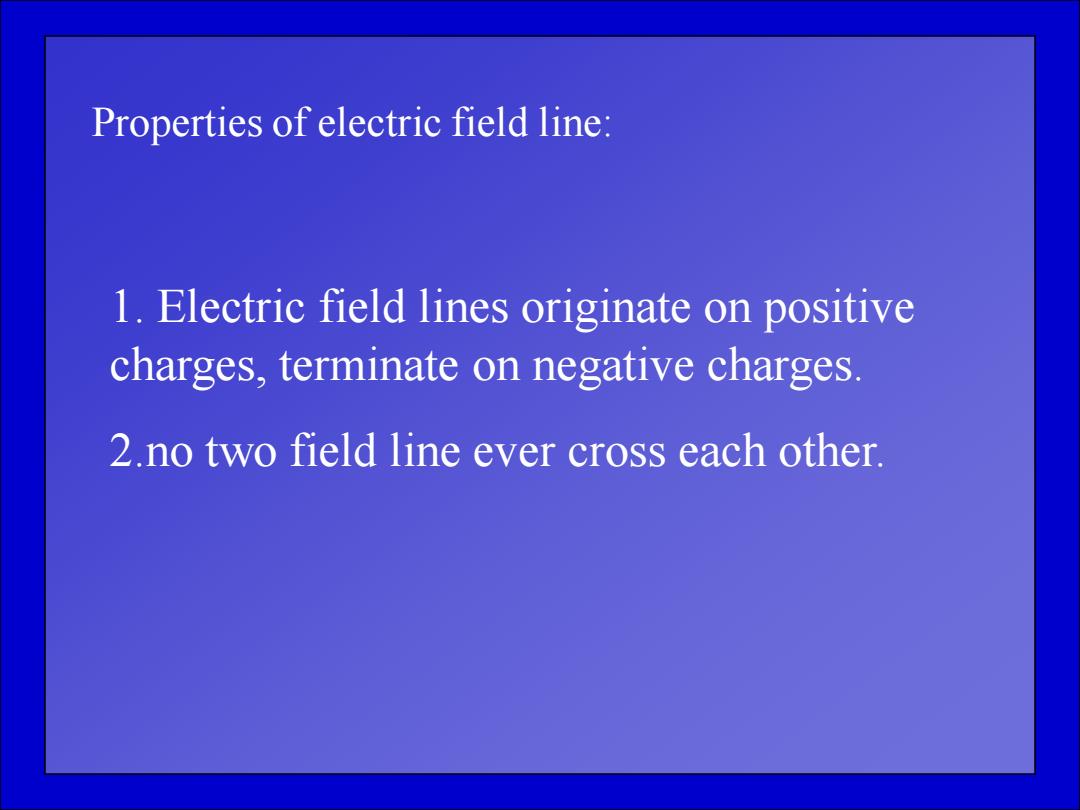
Properties of electric field line: 1.Electric field lines originate on positive charges,terminate on negative charges. 2.no two field line ever cross each other
Properties of electric field line: 1. Electric field lines originate on positive charges, terminate on negative charges. 2.no two field line ever cross each other
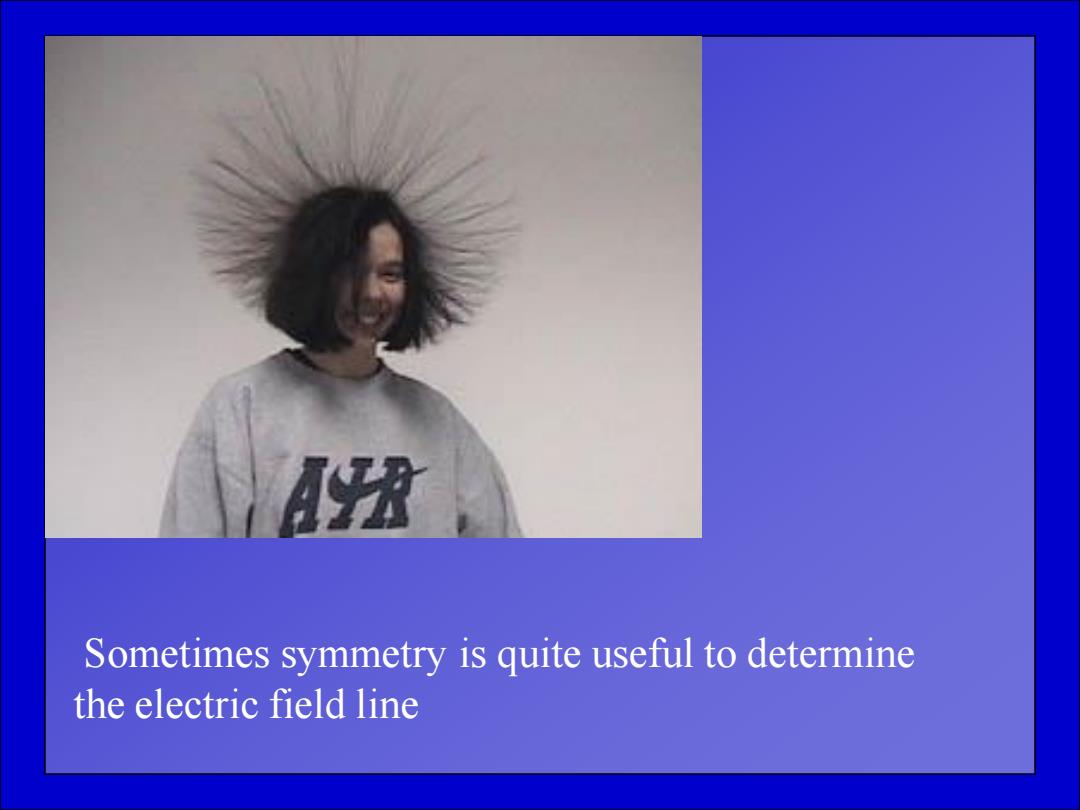
Sometimes symmetry is quite useful to determine the electric field line
Sometimes symmetry is quite useful to determine the electric field line
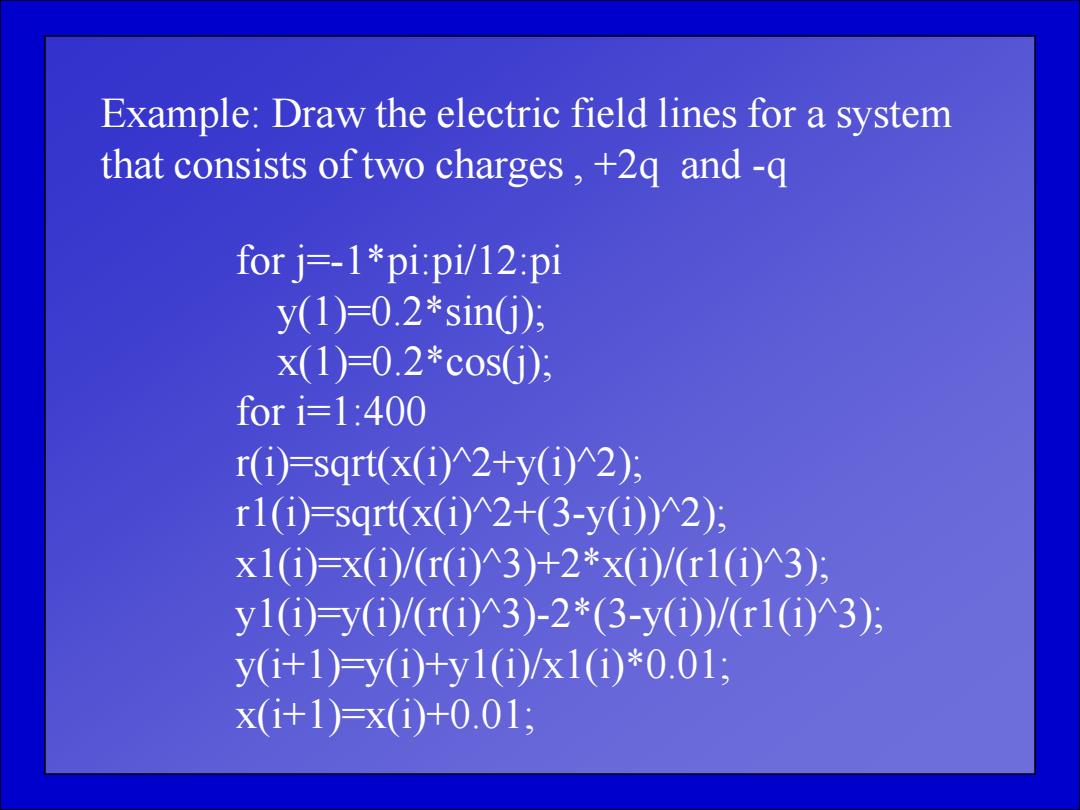
Example:Draw the electric field lines for a system that consists of two charges +2q and -q for j=-1*pi:pi/12:pi y(1)=0.2*sinG): x(1)=0.2*cos0房 fori=1:400 r(①=sqrt(x(①)2+y(①2) r1(i斤sqrt(x(i^2+(3-y(0)^2): x1(①=x(①/(r(①3)+2*x(①/(rl(①^3) y1(i)y(i)/r(①3)-2*(3-yi)/c1(①^3) y(i+1)y(①)+y1(①/x1(i①)*0.01 x(i+1)x(①+0.01;
Example: Draw the electric field lines for a system that consists of two charges , +2q and -q for j=-1*pi:pi/12:pi y(1)=0.2*sin(j); x(1)=0.2*cos(j); for i=1:400 r(i)=sqrt(x(i)^2+y(i)^2); r1(i)=sqrt(x(i)^2+(3-y(i))^2); x1(i)=x(i)/(r(i)^3)+2*x(i)/(r1(i)^3); y1(i)=y(i)/(r(i)^3)-2*(3-y(i))/(r1(i)^3); y(i+1)=y(i)+y1(i)/x1(i)*0.01; x(i+1)=x(i)+0.01;
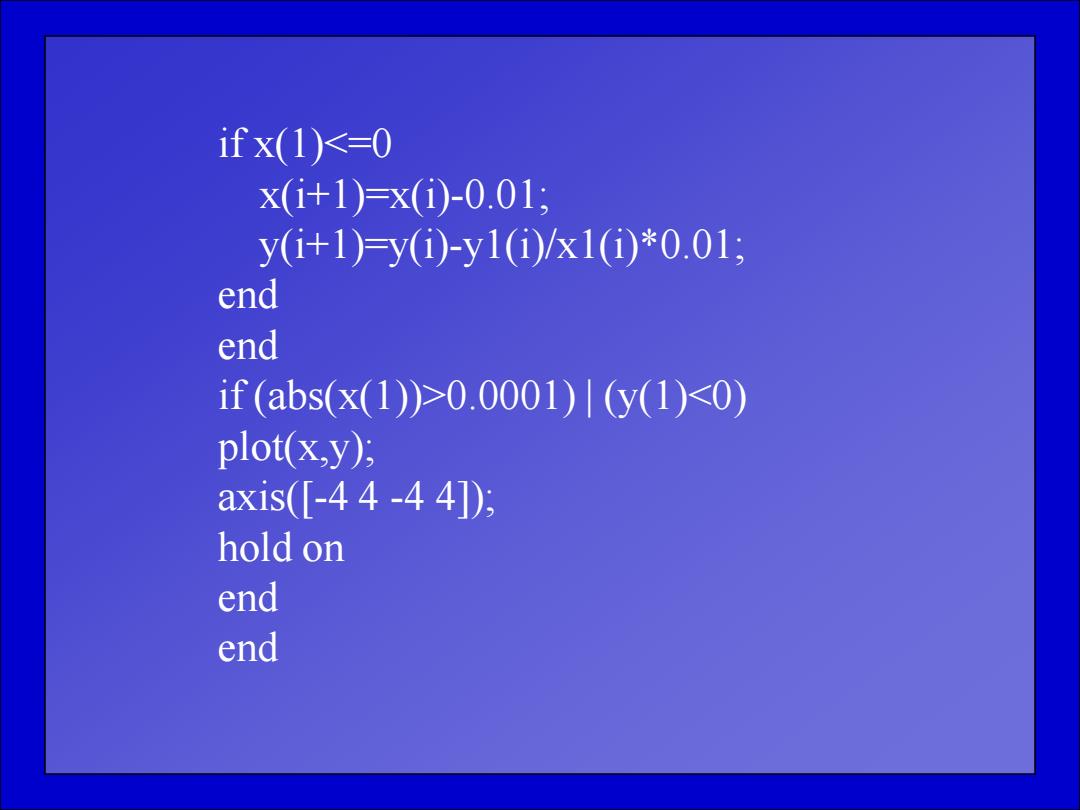
ifx(1)0.0001)l(y(1)<0) plot(x,y); axis([-44-44]) hold on end end
if x(1)0.0001) | (y(1)<0) plot(x,y); axis([-4 4 -4 4]); hold on end end

4 3 3 -4 3 -2 0 2 3 4
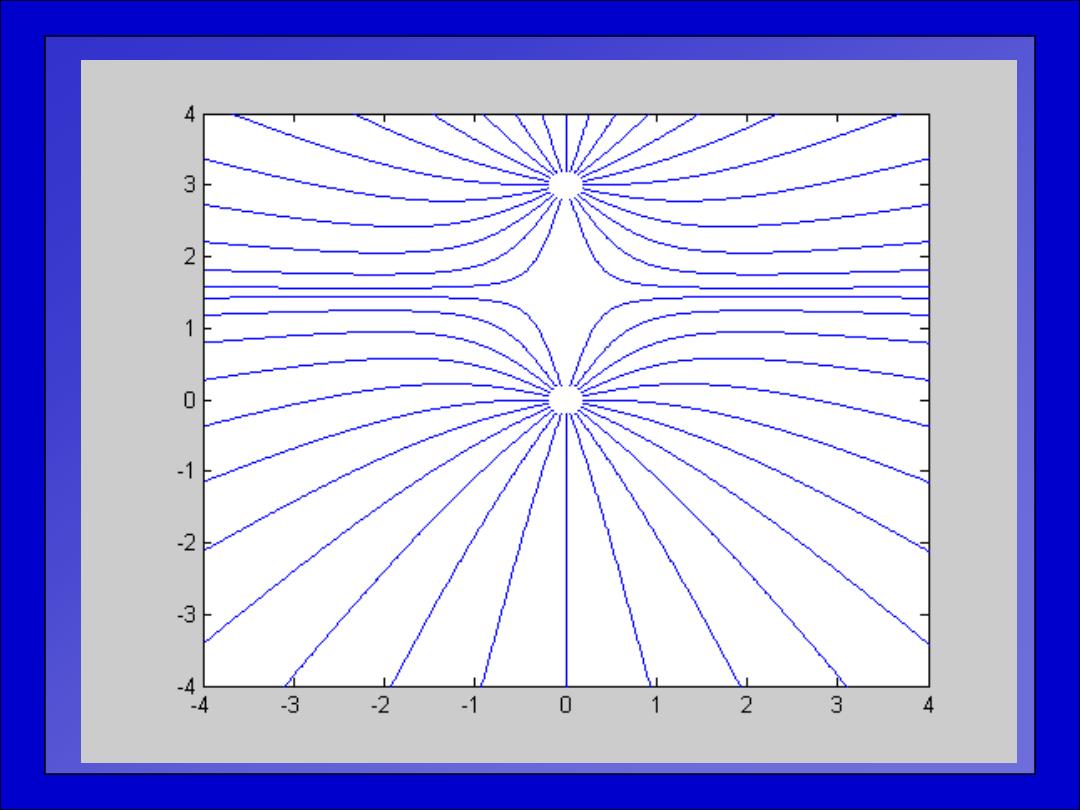
4 3 2 0 -2 -3 -4 3 -2 -1 0
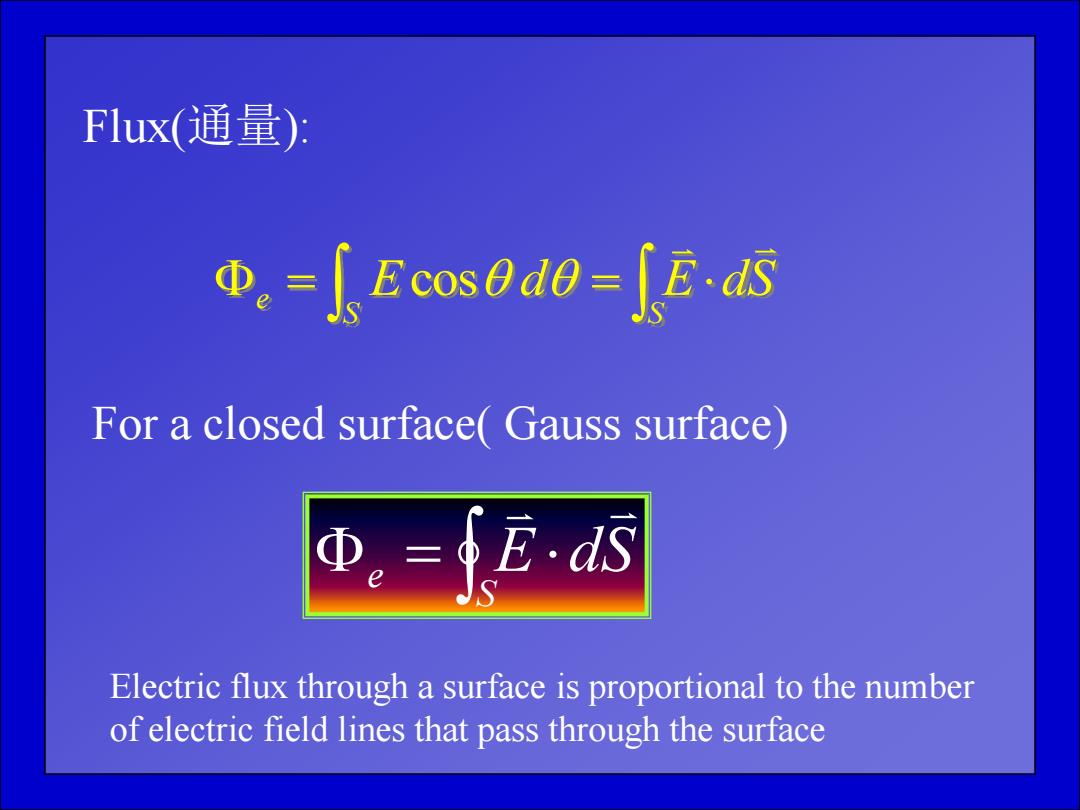
Fux(通量): =Fcos0de=E-d5 For a closed surface(Gauss surface) .=fE5 Electric flux through a surface is proportional to the number of electric field lines that pass through the surface
Flux(通量): S S e E d E dS cos For a closed surface( Gauss surface) S e E dS Electric flux through a surface is proportional to the number of electric field lines that pass through the surface